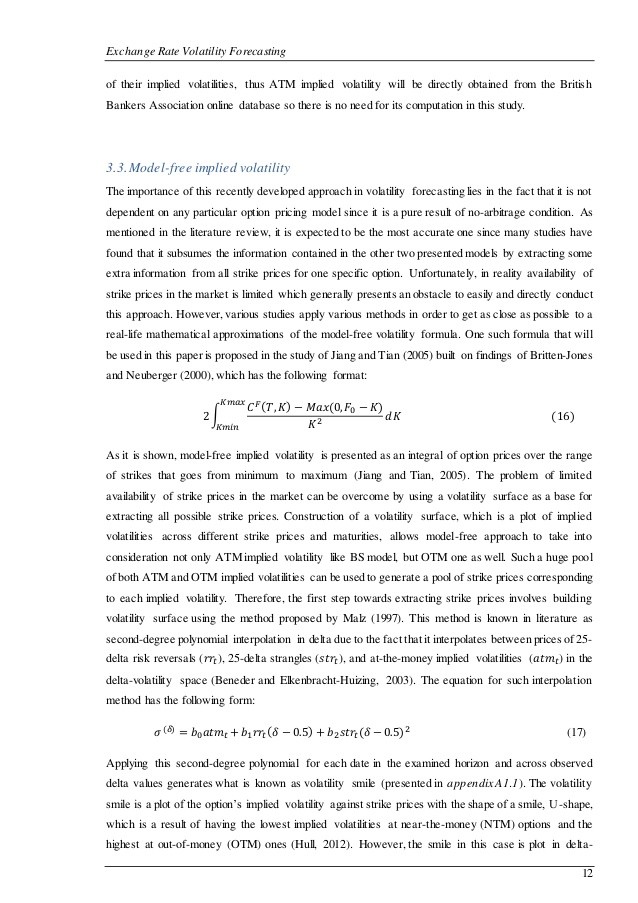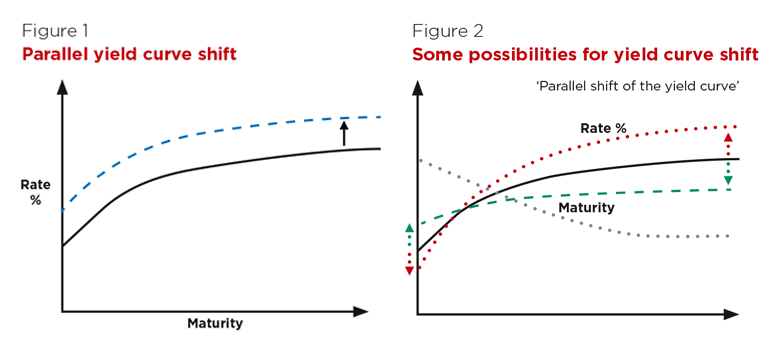Implied Volatility A Better Way to Gauge Risk
Post on: 14 Июль, 2015 No Comment

If you ask most investors how risky corporate bonds are compared to government bonds, or to compare emerging market stocks vs. domestic stocks, you’ll find that most investors have a sense of the relative risk based on personal experience—but nothing concrete. If you ask the same investors how risky an investment in gold is vs. the S&P 500 their answers usually get even more ambiguous.
However, in the last several years, we’ve seen a remarkable (yet largely unheralded) new source of information to help investors determine the risk level of an asset class or sector. Thanks to the emergence of sector-specific ETFs and options on these ETFs, investors can now easily determine an objective measure of risk for the universe of possible investments.
How risky is gold today? You can look at options on GLD. an ETF that holds gold bullion.
How risky is it to invest in Brazilian stocks? You can look at options on EWZ an ETF which tracks an index of Brazilian stocks.
For those of you not familiar with trading options, you first need to know that a “call option” gives the investor the right to buy the ETF for a specific price until a future date, while a “put option” gives the investor the right to sell the ETF for a specific price until a designated date in the future. (For more information on options, visit the Options Industry Council for a free tutorial.)
Options prices are largely determined by the market’s estimate of an the underlying future risk level of a financial product. In this example, were using an ETF. Investors can use what is known as implied volatility to gauge the markets prediction for the risk level of the underlying instrument. Implied volatility is not a new concept and is something every quantitative finance class teaches.
However, what is new in implied volatility is that there are widely traded options on most major asset classes because of the emergence of options on ETFs (options do not trade on mutual funds). The market for options on ETFs provides an objective assessment of risk.
Buying Insurance via Put Options
Let’s focus on put options for a moment. Put options on an ETF act like insurance against any future decline in the value of that particular ETF. If you buy a put option, you pay a premium to the seller, who in turn promises to cap your potential future losses from a decline in the value of the ETF. Buying a put option on an ETF is similar to buying insurance on the value of your position.
Think of it this way: Insuring a 3,000 square foot beach house is much more expensive than insuring the same 3,000 square foot house located 100 miles inland, because the risk of damage to the house right on the beach is higher. However, insuring a 3,000 square foot house just five miles inland may actually cost more than insuring a smaller 1,000 square foot beach house right on the ocean—because rebuilding the 1,000 square foot beach house will cost less if a hurricane demolishes it.
In order to use the cost of insurance to compare risk levels among these various houses, we need a standardized measurement of risk. In real estate, the cost of insurance might be made equivalent by correcting for square footage (i.e. the cost of insurance per square foot of a beach house vs. a house further inland, for example).
When it comes to options, the market’s standardized measure of risk is implied volatility. Investors can easily find information on implied volatility—if they know where to look. For example, Morningstar provides implied volatility data for ETFs under a free membership under its Options tab. You can typically see options prices (and implied volatilities) for options expiring from a few days into the future out to as far as three or more years.
The chart below shows the implied volatility of put options that are in effect between today and six months from now (March 2012). These are known as ‘at the money’ put options because they protect against any decline below the current value. These results (from September 7, 2011) provide an enormous amount of information that can help investors determine the future volatility of each listed asset class.
Implied Volatility for Options Expiring in March 2012
Source: Morningstar.com
Putting Implied Volatility into Perspective

Historically, the average volatility for the S&P 500 over the past 60 years is around 15% . Over the past two years, the volatility for the S&P 500 has been 18.7%. Over the past three years, (which includes the worst of the volatility in the last crash), annual volatility rose to 30.2%. These percentages suggest that we should anticipate continuing high volatility over the next six months.
The implied volatility for the S&P 500 for options that expire at the end of 2013 (not shown in the table above) is 28%. In other words, the options market is also telling us that investors should anticipate high levels of volatility over the next few years.
To make implied volatility more concrete, my rule of thumb is to anticipate that an asset class can lose twice as much as its estimated volatility over a twelve month period (see, “How to Measure Your Investment Portfolio—Part One: Volatility & Beta ”). Think of this like the potential for losses that an insurance company might face in a really bad hurricane season. You don’t expect this outcome, but you want this to be survivable if it should occur.
As we would expect, short-term treasury bonds (SHY ) have very little risk. What is surprising, though, is that long-term treasury bonds have a high level of implied volatility. On the basis of implied volatility, they are even riskier than high-yield (a.k.a. “junk”) bonds. Given the low yields on long-term treasuries (TLT has a yield of 3.7% as of this writing) it would appear that there is a difference of opinion with regard to the safety of long-term treasuries between the options market and the holders of long treasuries.
Why would the risk of long-term Treasuries be so high? The options market suggests that there is substantial risk that investors may sell off Treasuries and look for yield elsewhere.
Keeping a Keen Eye on Implied Volatility
There’s one caveat to using implied volatility to predict future risk: Implied volatility can be too reactive to present market conditions. In 2008, for example, investors were so pathologically risk-averse that the implied volatility for companies that had calmly weathered the storm was ridiculously high . The options markets are capable of getting panicky, too. That being said, investors will be well-served by getting comfortable using implied volatility to help measure risk.
While it’s no crystal ball, implied volatility has served important warnings to us in the past.














